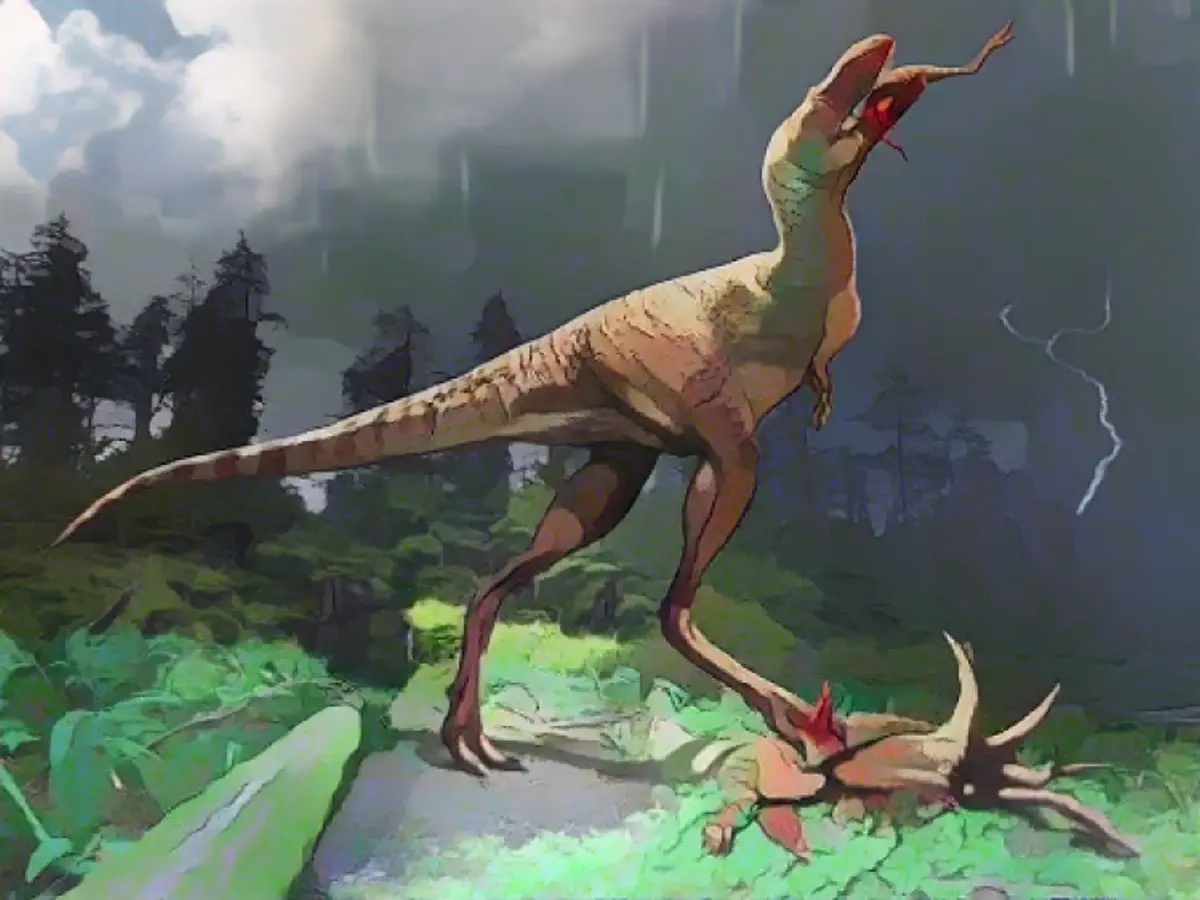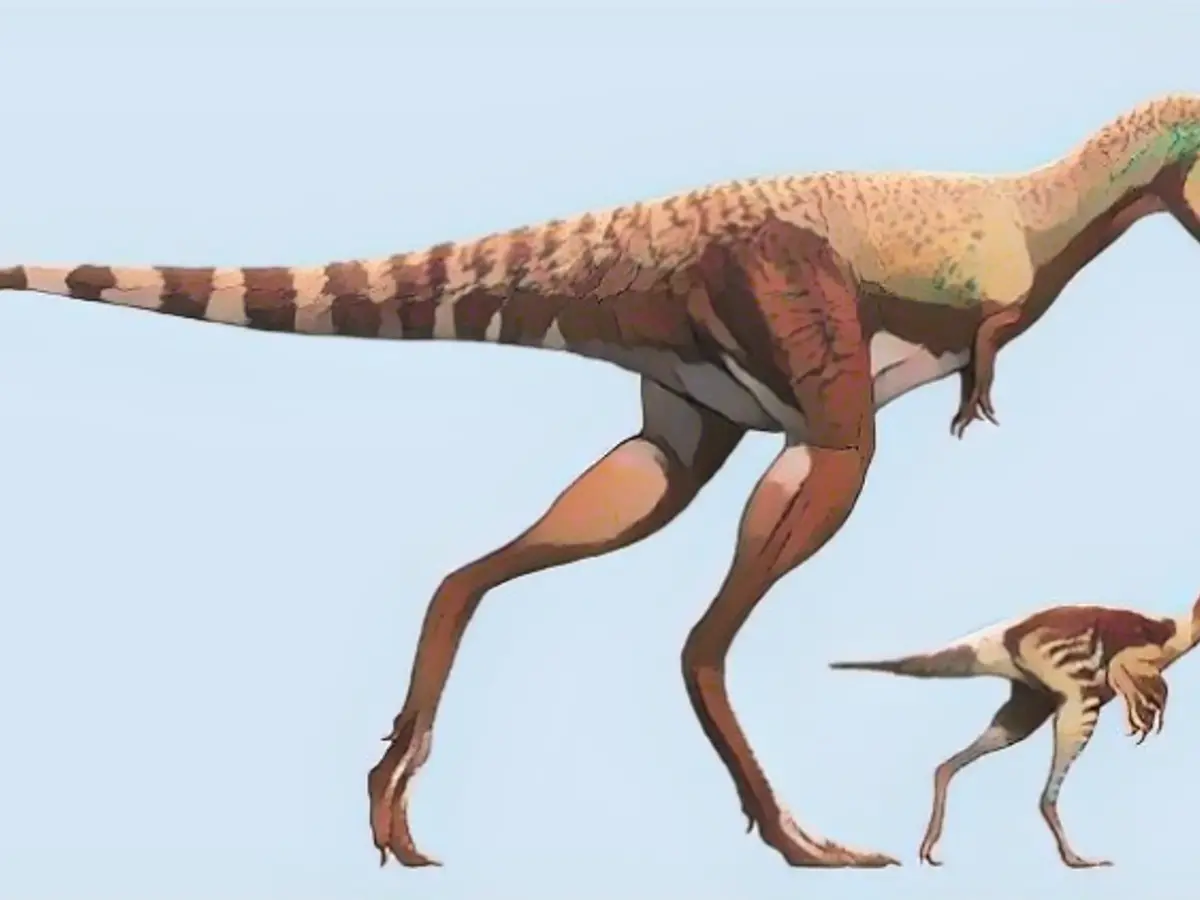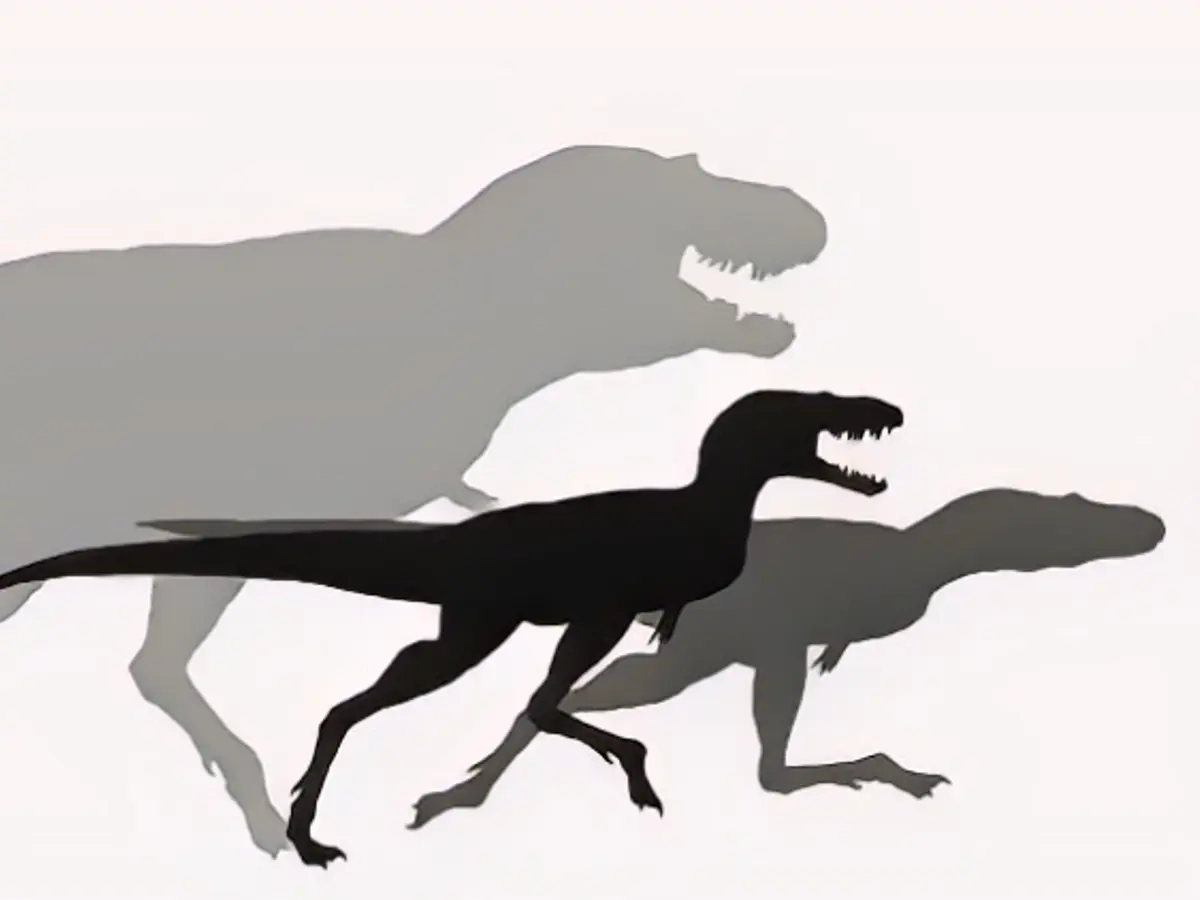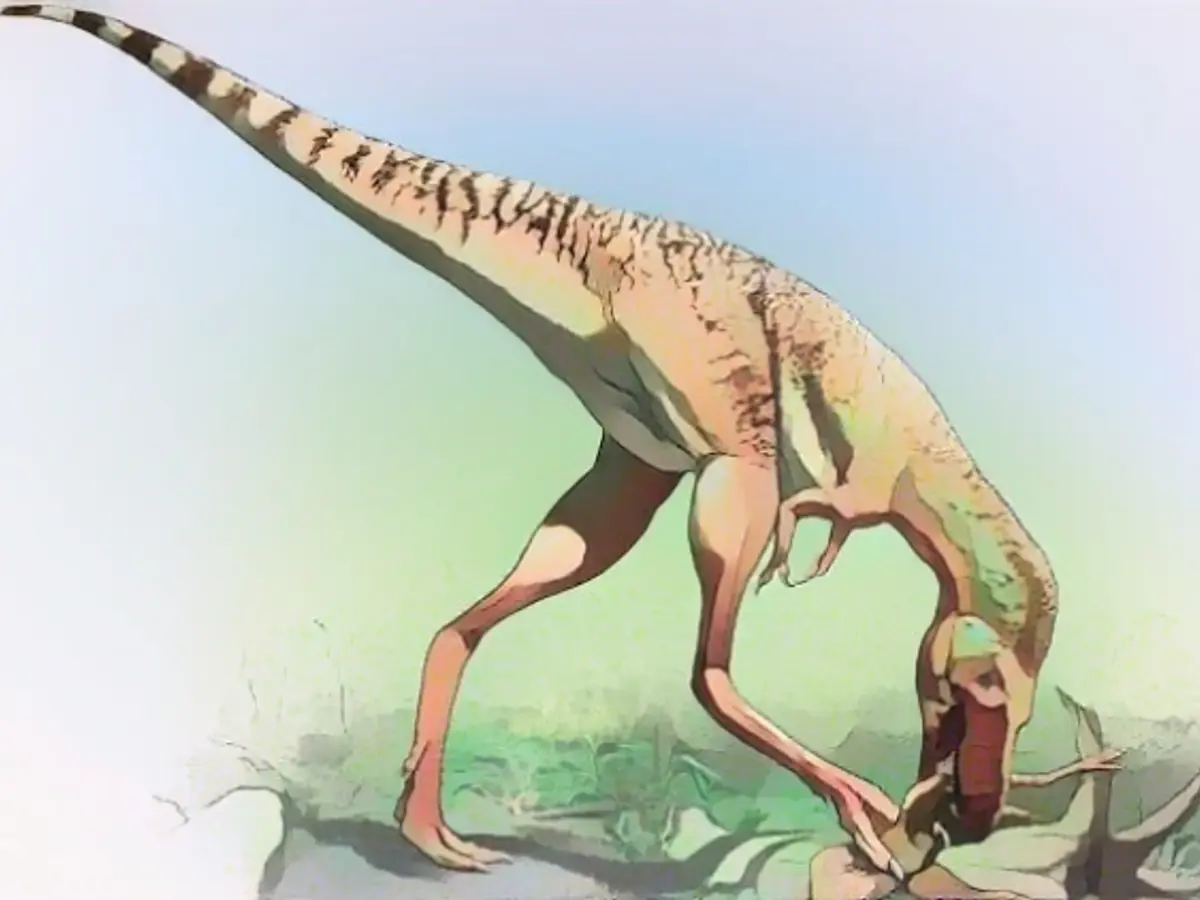Baby tyrannosaurs already had to feed themselves
What did the dinosaur children actually eat - the leftovers that the adults left for them? Or were they fed by their parents? Studies of the stomach contents of a tyrannosaur show that they apparently had to feed themselves right from the start. And they took other prey.
Did small tyrannosaurs nibble on what their parents and other group members preyed on - or did they look for snacks of a suitable size themselves? So far, there have only been speculations. The analysis of the stomach contents of a tyrannosaurid now supports the theory that the young animals themselves went on the hunt for prey - and had completely different species in mind than their gigantic parents.

Tyrannosauridae were large, carnivorous dinosaurs that dominated the ecosystems of Asia and North America towards the end of the Cretaceous period, around 80 to 66 million years ago. Measuring only about one meter as babies, some of them grew into colossi up to 12 meters long and weighing 6 tons, as the research team led by François Therrien from the Royal Tyrrell Museum in Drumheller (Canada) explains in the journal "Science Advances" .
Prey spectrum changes with age
Their body proportions changed significantly in the course of this growth - from graceful with a narrow skull and slender hind legs to extremely bulky. Initially blade-like, their teeth became increasingly large and angular, ideal for breaking bones. Researchers had therefore already developed the theory that the prey spectrum also changed as they grew into mega-hunters. However, there was no direct fossil evidence for this.

The research team has now examined the exceptionally well-preserved remains of a young tyrannosaurid of the species Gorgosaurus libratus. At around 330 kilograms, it weighed only about an eighth of an adult specimen. The animal excavated in the Dinosaur Park Formation in Alberta lived around 75.3 million years ago and was 5 to 7 years old when it died.
The last meals eaten shortly before death are still clearly visible in its stomach: Hind legs of two much smaller dinosaurs. The well-muscled hind legs and intestines of carnivores and crocodiles living today are also usually eaten first, it was said.

According to the analysis, the prey were so-called Caenagnathidae of the species Citipes elegans, each of which died at the age of less than one year and in quick succession. The bird-like, probably feathered dinosaurs are considered herbivores and omnivores. The two captured young animals weighed 9 to 12 kilograms, it was said.
Not enough prey for adult dinosaurs
Because an adult Gorgosaurus would hardly have bothered with such tiny prey, the researchers conclude that the young animal successfully went hunting itself - and was not waiting to get something from the big ones in its group. In many modern large reptiles, such as crocodiles and Komodo dragons, the young animals also hunt for prey themselves, they said.

This finding also means that Gorgosaurus and probably other Tyrannosauridae such as Tyrannosaurus rex probably occupied several ecological niches in the course of their lives. In their youth, they devoted themselves to other, smaller species than in later years, when they had grown into gigantic apex predators and attacked the mega-herbivore dinos of their time, which weighed more than a ton.
Therrien explained that using different prey animals than adult relatives in their youth had a decisive advantage: Interspecies competition between young and old for food resources is avoided. Young oviraptorosaurs such as Citipes probably existed in large numbers as potential prey for small Tyrannosauridae, as a clutch of such dinosaurs could contain more than 30 eggs.
Read also:
- This will change in December
- German activists speak out in Dubai on suffering in Israel and the Gaza Strip
- Nuclear fusion - hype or solution to energy problems?
- Budget crisis fuels debate on citizen's income - Bas warns against populism
It's fascinating that even baby tyrannosaurs, such as the Gorgosaurus, had to hunt for their own food from a young age, as indicated by their stomach contents filled with the remains of smaller dinosaurs. This discovery challenges the notion that dinosaur parents provided food for their offspring, suggesting that education about dinosaur behavior may need to be revised.
Fossil analysis reveals that the prey spectrum of young tyrannosaurs, like the Gorgosaurus, changed significantly as they grew, feeding on smaller species that would have been insignificant to adults. This finding suggests that the role of fossils in our understanding of dinosaur evolution and behavior is essential and supports ongoing education in paleontology.
Source: www.ntv.de







